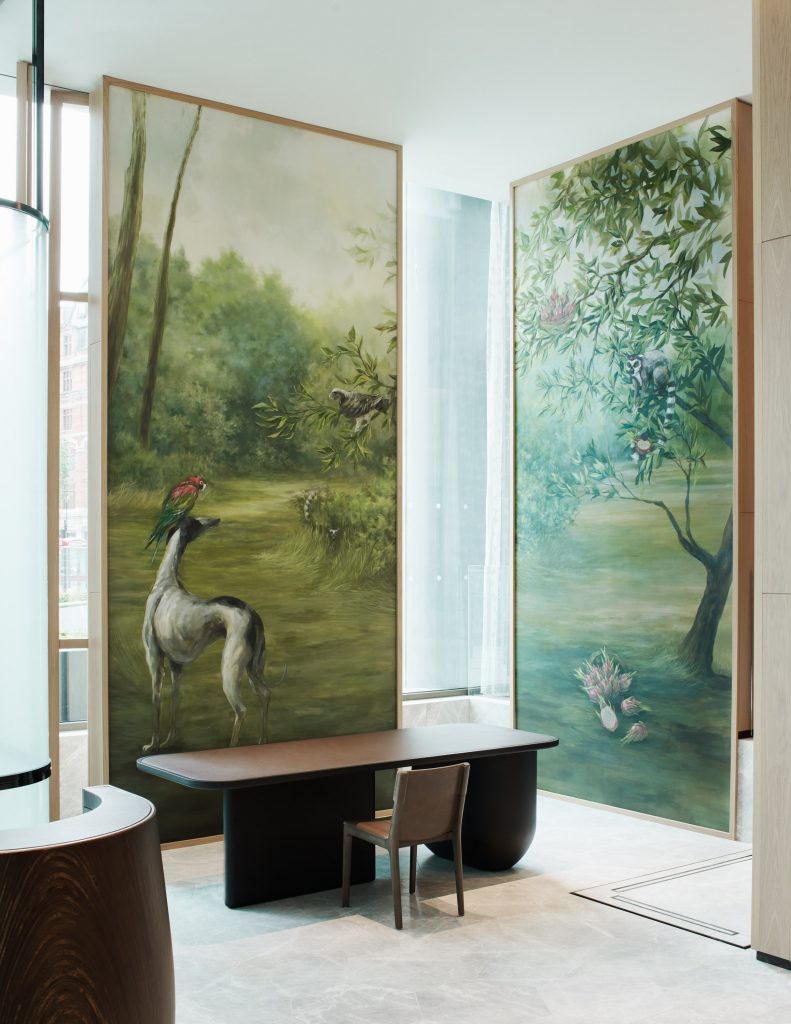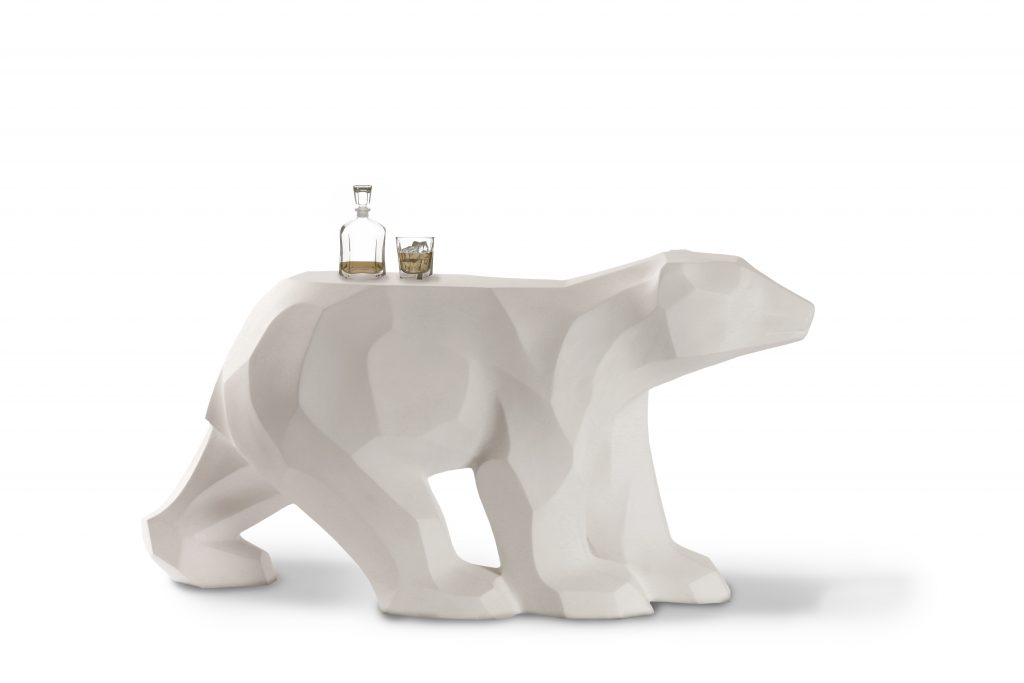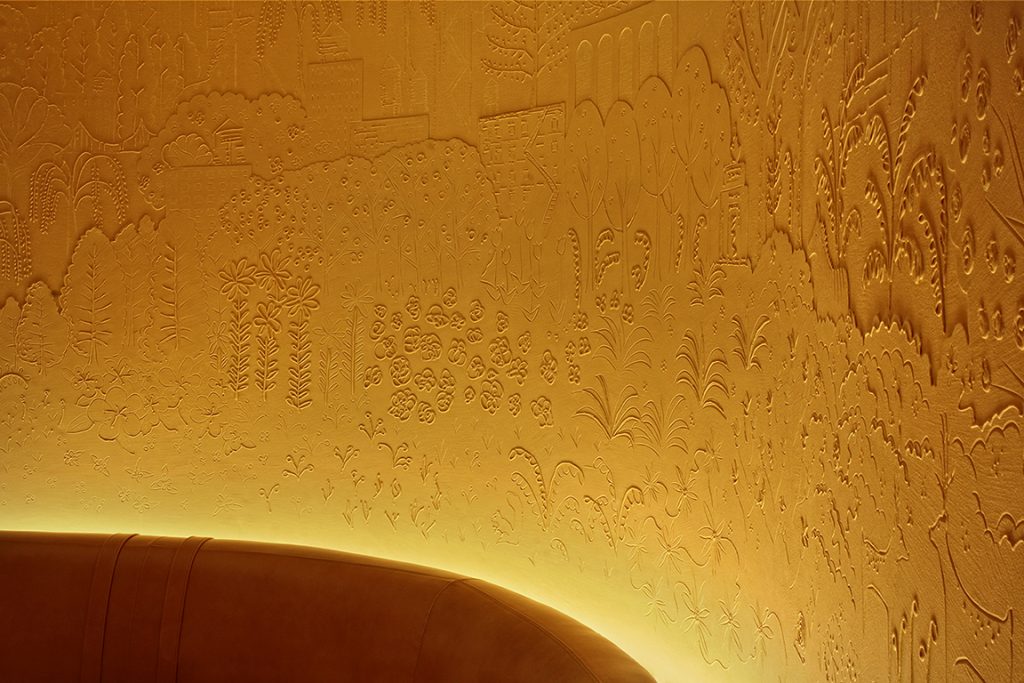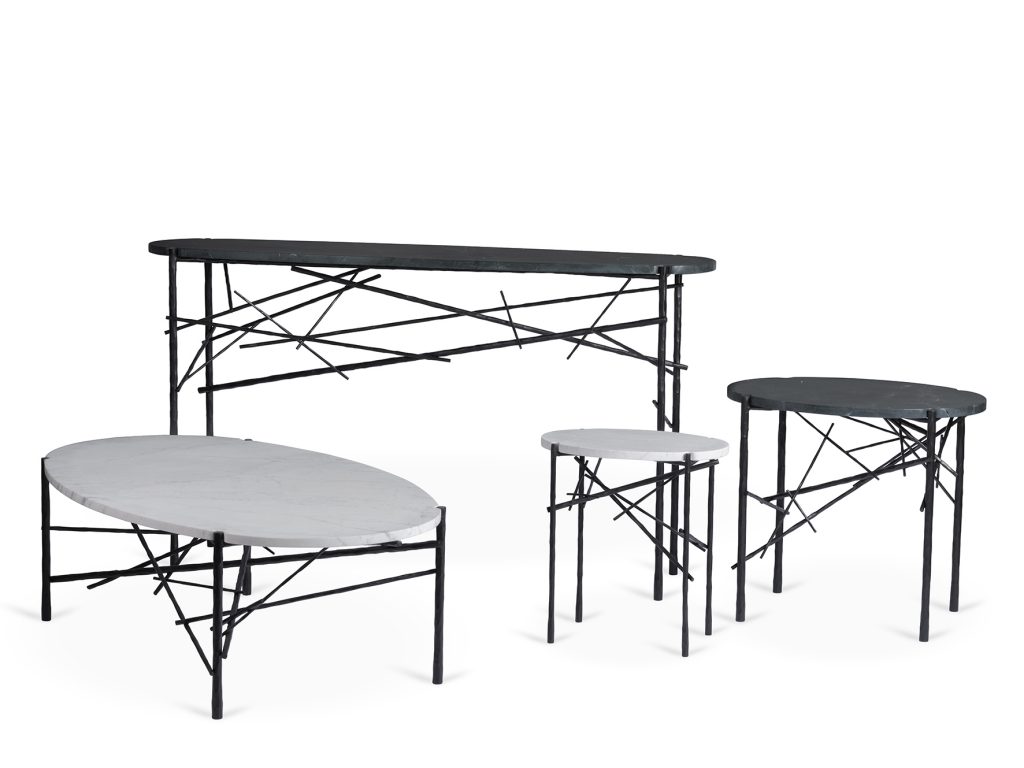 Deborah Moss is a Canadian artist whose artwork draws on inspiration from a broad range of epochs and cultures. She is co-founder of Moss and Lam, a custom art studio based in Toronto, which she started with her late husband Edward Lam in 1987. Since its inception, Moss and Lam have been commissioned by some of the world’s leading interior designers and architects to create custom artwork, wall surfaces and 3Dimensional installations that are visually and structurally integrated with
Deborah Moss is a Canadian artist whose artwork draws on inspiration from a broad range of epochs and cultures. She is co-founder of Moss and Lam, a custom art studio based in Toronto, which she started with her late husband Edward Lam in 1987. Since its inception, Moss and Lam have been commissioned by some of the world’s leading interior designers and architects to create custom artwork, wall surfaces and 3Dimensional installations that are visually and structurally integrated with
their environments. The diversity of these installations reveals Moss and Lam’s versatility, its passion for materials and its desire to create artworks that are imaginative, whimsical and authentic.
Moss and Lam has created large-scale commissions for many international luxury brands in the hospitality and retail industries, as well as public art commissions throughout the world.
Let’s get to know her better!
What is your main source of inspiration?
I have a trove of personal fascinations and references that have developed over the years. Some are new, some retain my attention over the years and others are archived. These references can be from art and design history, fashion, nature , film, graphics, literature. It’s like having a personal image library to borrow from to create my own visual narratives.
What is your process when approaching a new project?
It’s important to have as much information about a project as early as possible in relation to the desired completion date. We try to do an informed work back from the given timeline to get a sense of what is possible. I guess this doesn’t sound very creative but because we make most of our work by hand, things take time. Time is our friend. We need to know what we can realistically bring to a project. We ask a lot of questions because the answers help us move towards a concept – materials, aesthetic, context and budget.
Your work merges design and installation: what is the relationship between form and function?
I don’t really distinguish between the two. You can’t have one without the other. Our installation work relies heavily on design and the work must function within the context of a space. With my furniture, the function of each piece must be considered. Form is an idea that satisfies a function, be it a chair or a mobile or mural. I think people don’t see art as being about function but in our realm we are very mindful of the relationship between our product and the space it inhabits. I feel very responsible to consider everything we produce in terms of form and function.
Can you tell us about the most challenging or interesting project you worked on?
Sometimes the most challenging projects are the most interesting in terms of learning and growth. I think some of the large scale hotel projects where we are involved in multiple installations can be the most challenging. With these projects, our work might begin 4 or 5 years before the hotel opens! The process begins with design development which is the beautiful stuff you see when the hotel opens, like the icing on the cake. What the guests don’t see is the amount of project management behind the scenes. I am very proud of my PM team who have tackled really complicated logistical considerations. Without them, the pretty stuff wouldn’t happen. Lately, in terms of personal interest, I’d have to say I find myself drawn to further furniture development. I love thinking about what I want to make – say a table, then see how it evolves from doodle to sketch to 3d modelling and prototype. It’s humbling and exciting to see an idea come to life.
 Pan Pacific Hotel, London, photo_ Michael Sinclair
Pan Pacific Hotel, London, photo_ Michael Sinclair The Londoner Hotel, London, photo_ Michael Sinclair
The Londoner Hotel, London, photo_ Michael Sinclair

Moss and Lam With Holly Hunt, Walking Bear, photo_ courtesy of Moss and Lam
 Peninsula Hotel, photo_ courtesy of Moss and Lam
Peninsula Hotel, photo_ courtesy of Moss and Lam
 Moss and Lam With Holly Hunt, Nido Tables, photo_ Stefan Blondal
Moss and Lam With Holly Hunt, Nido Tables, photo_ Stefan Blondal Moss and Lam (With Neolith + Ciot), Botanica, photo_ Stefan Blondal
Moss and Lam (With Neolith + Ciot), Botanica, photo_ Stefan Blondal
 Raffles Hotel, Singapore, photo_ courtesy of Moss and Lam
Raffles Hotel, Singapore, photo_ courtesy of Moss and Lam
